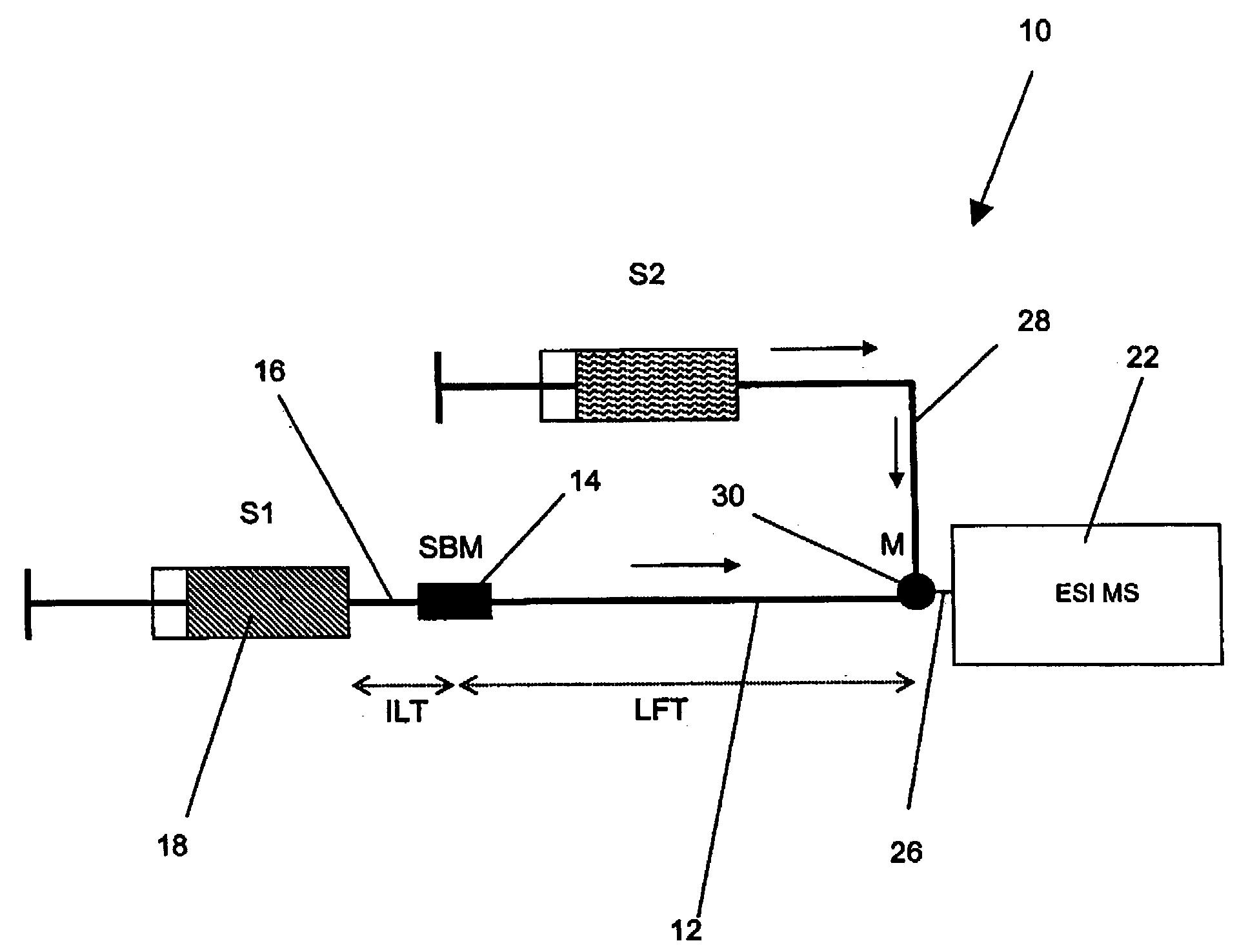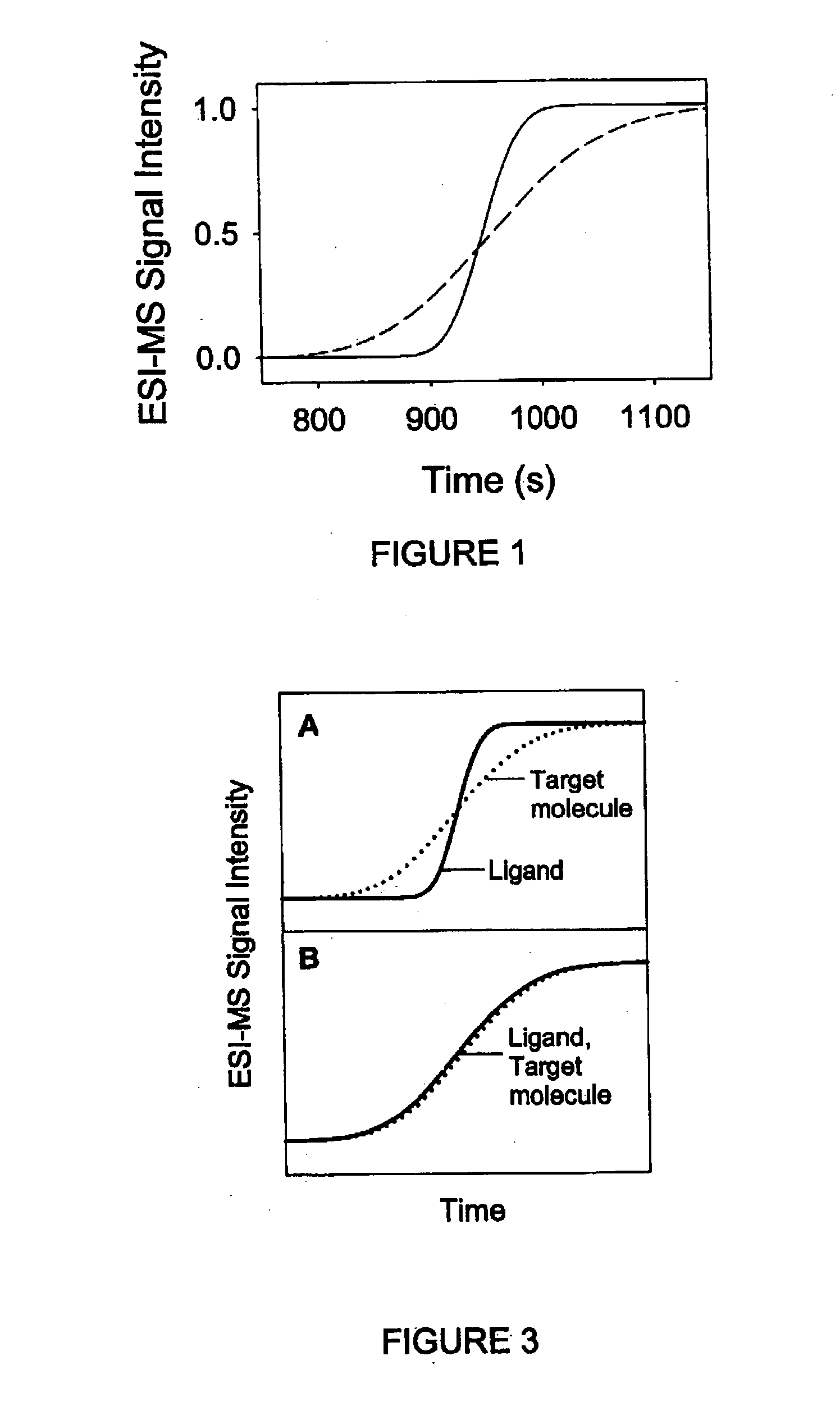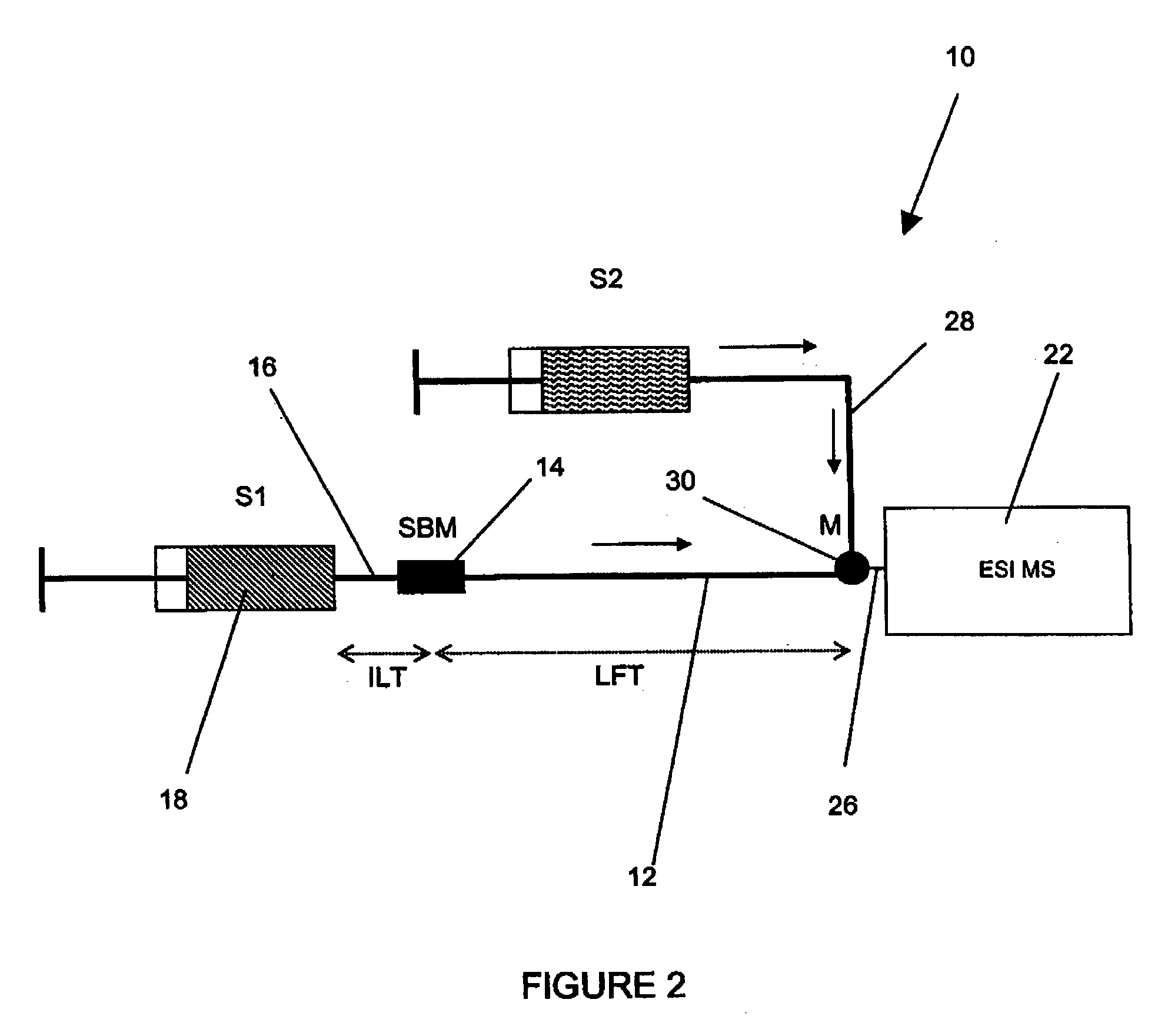Method and apparatus for the detection of noncovalent interactions by mass spectrometry-based diffusion measurements
- Summary
- Abstract
- Description
- Claims
- Application Information
AI Technical Summary
Benefits of technology
Problems solved by technology
Method used
Image
Examples
example 2
[0114] Myoglobin in the laminar flow tube is exposed to denaturing conditions (50% acetonitirile, pH 10). Under these conditions the heme group is not expected to bind to the protein. Referring to FIG. 5, dispersion profiles of the protein in myoglobin (A), and of the heme in myoglobin (B) were recorded. Panel (C) shows the dispersion profile of heme recorded under the same solvent conditions but in the absence of protein. The fitted diffusion coefficients D are indicated in each panel. Solid lines are fits to the experimental data based on equation 17. These dispersion profiles reveal a small diffusion coefficient for the protein, and a much larger diffusion coefficient for the heme, as expected. The diffusion coefficient D of heme in the protein solution is almost as large as that of heme in the protein-free solution (considering the experimental uncertainty in the measured value of D), thus confirming that noncovalent interactions between heme and the protein are absent or extrem...
example 3
[0115] Myoglobin in the laminar flow tube is exposed to "semi-denaturing" conditions (30% acetonitrile, pH 10). FIG. 6 shows the dispersion profiles of the protein in myoglobin (A), and of the heme in myoglobin (B) recorded under these solvent conditions. Panel (C) shows the dispersion profile of heme recorded under the same solvent conditions but in the absence of protein. The fitted diffusion coefficients D are indicated in each panel. Solid lines are fits to the experimental data based on equation 17. The diffusion coefficients of heme and protein in the myoglobin solution are almost identical. A much larger diffusion coefficient is measured for heme in the absence of protein. These results show that under these semi-denaturing conditions, heme and protein are still bound to each other.
[0116] The findings presented in Examples 1, 2, and 3 are in agreement with the results of optical control experiments. It is pointed out that standard ESI-MS fails to detect the different noncoval...
example 4
[0117] It will now be described how the present invention can be generalized to screen a number of potential ligands for binding to a particular target. The principle of this approach is schematically depicted in FIG. 7. An ESI mass spectrometer is used to monitor the dispersion profiles of a number of potential ligands simultaneously. All of these potential ligands are mixed in the same solution, initially in the absence of the target, resulting in the dispersion profiles shown in FIG. 7A. Note that all of the profiles are steep, due to the relatively small molecular size of the potential ligands. FIG. 7B shows a scenario where the experiment is repeated in the presence of the target. It is assumed that one of the ligands binds noncovalently to the target. The dispersion profile of this ligand (solid line in FIG. 7B) is much more extended than that of the other potential ligands, and it is also much more extended than the profile of this ligand recorded in the absence of the protei...
PUM
 Login to View More
Login to View More Abstract
Description
Claims
Application Information
 Login to View More
Login to View More - R&D
- Intellectual Property
- Life Sciences
- Materials
- Tech Scout
- Unparalleled Data Quality
- Higher Quality Content
- 60% Fewer Hallucinations
Browse by: Latest US Patents, China's latest patents, Technical Efficacy Thesaurus, Application Domain, Technology Topic, Popular Technical Reports.
© 2025 PatSnap. All rights reserved.Legal|Privacy policy|Modern Slavery Act Transparency Statement|Sitemap|About US| Contact US: help@patsnap.com



